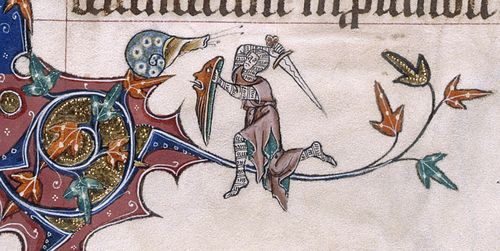
The doodles found in the margins of very old manuscripts are often just as interesting as the content of the manuscripts themselves.
From the late 13th century through to the 15th century, images of knights fighting snails pop up in all sorts of unlikely places within the medieval literary world.Images of knights fighting snails first started to emerge in North French illuminated manuscripts (which are decorated with richly coloured illustrations) towards the end of the 13th century (around 1290). A few years on – although slightly less consistently – these same images started appearing in Flemish and English manuscripts.Interestingly, in most cases these snail doodles appear to be unrelated to the adjoining illustrations of textual passages.Snail assailants are almost always male knights. However, there is one known instance of a woman opposing a snail wielding a spear and shield.
As these snail combat doodles increased in popularity within manuscripts, they became an accepted element of medieval imagery. From here, they spread to other areas of medieval life.Decorative panels carved around 1310 on the main entrance of Lyon Cathedral in France.Despite travelling across the continent, the knights versus snails motif varied little from country to country, which suggests that it may have had a deeper meaning.
Nobody knows exactly why battles between snails and knights were so popular throughout the middle ages. One theory is that these doodles added humour to texts which were otherwise quite dry and serious.A reader could rest their eyes by taking a moment to laugh at the scene of snail combat before continuing with their reading.Many of the doodles show a knight dropping their sword or kneeling submissively before their diminutive shelled foe, which accentuates its satirical implications.